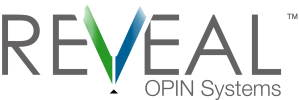
ERM = enterprise report management
Let’s get this out of the way now: the ERM we’re talking about is enterprise report management. Not enterprise risk management. Not electronic records management. Not enterprise resource management. And definitely not the British space filler equal to um.
ERM ≠ ERP
In the sea of acronyms, it’s easy to confuse terms, especially when corporate systems come into play. The most ubiquitous acronym in most organizations is ERP. Some people seem to think enterprise report management (ERM) and enterprise resource planning (ERP) are basically the same thing. They’re not.
Usually, ERPs are entire systems that deal with every area of your company—from accounting to shipping to case management. On the other hand, ERMs deal with individual sections of your company. So, your ERM will get its shipping invoices from one part or your ERP while payroll will get billable hours from a different part of your ERP.
Here’s a visual to help you remember how ERMs are different from ERPs. Your ERP is like B.O.B. from “Monsters vs. Aliens.” Except with a brain. Okay, maybe that’s a big stretch—but when you think of ERPs, picture B.O.B. seething through a doorway (0:02-0:03 of the video). Your ERP touches everything in your company.
Meanwhile, a traditional ERM is more restrained. It sits outside B.O.B.’s reach and waits for S.O.S. messages from payroll or accounting to escape from B.O.B.—S.O.S. messages in the form of reports that take way too long to understand as-is. If you really need a visual, think of this bear. It’s immensely powerful, but it needs a prompt to start. Likewise, an ERM is immensely powerful, but it will only perform the tasks you tell it to.

ERM = a way to maximize productivity
Another way to think of ERMs (if the patient bear image didn’t quite work for you) is to think of them as translators. The primary job of ERMs is to make computer-generated reports easily digestible by humans. Most often, these reports are quite large, complicated, and not intuitively formatted.
For example, say accounting (which operates within your ERP) produces lengthy monthly reports that detail expenses. If you want to compare how much was spent on travel in the winter months versus in the summer months, you’ll need to manually look at each individual report, find the travel expenses within each report, and then aggregate your results into one place so that you can compare them.
At least, that’s how it would work without an ERM.
A customer we recently worked with needed to do something similar once per month. They had an employee who was in charge of generating reports for clients from reports they received from a third party. Before they had our ERM, they were manually locating and entering information—a process that took anywhere from four hours to four days each month. With our customized ERM solution, the process now takes just thirty minutes. That means they’re saving over a week’s worth of time every year just from using an ERM!
Saving time isn’t the only benefit of using an ERM. It’s also easier to maintain compliance, increase security, and monitor workflows. And given that the 2008 AIIM market assessment for enterprise report management shows that 45 percent of companies have at least 25 percent of their data in enterprise reports, it’s clear that an ERM could have a widespread effect on your company.
ERM ≠ on-demand reporting
You might have noticed me note above that usually, ERMs are separate from ERPs. That’s because they aren’t always so separate. ERPs are developing ways to incorporate what ERMs do into their workflows. This is called on-demand reporting and would be considered a part of your ERP—it’s also linked with the trend toward on-demand ERPs.
Instead of analyzing completed reports on a specified frequency, on-demand reporting lets users immediately search and view the most up-to-date data (which might still change before it’s finalized). On-demand reporting will be sold alongside your ERP, so you might already have that capability.
Now, the question is this: why bother with traditional ERMs if you can just use the on-demand reporting built into your ERP?
The answer is that since they aren’t the same, they’re both useful. That’s right—they’re not mutually exclusive. Traditional ERMs are built for digesting, sorting, and formatting large, static documents while on-demand reporting is built to analyze changing data, making on-demand reporting optimal for analysis that needs to happen more frequently than finalized reports allow.
Next steps: Find out if you need an ERM
Information is great, but it does little good if it doesn’t prompt action. Here’s how you can find out if your company would benefit from an ERM.
- Look at one division in your company. Narrow your focus instead of trying to tackle the entire company all at once.
- Define what kind of reports and analysis that division does. Does the division already have an ERM or use on-demand reporting? If so, make sure the ERM or on-demand reporting is actually doing what the employees need it to do. For a division that doesn’t have an ERM / on-demand reporting, ask around and see if they’re spending a lot of time sorting through documents.
- Explore new options. At OPIN, we offer a Perfect FitTM Methodology that tailors our solutions to meet your unique business requirements. Use the contact form on the right if you want to find out how you can optimize your enterprise reports!
Free guide: Checklist to get the most out of your ERM
